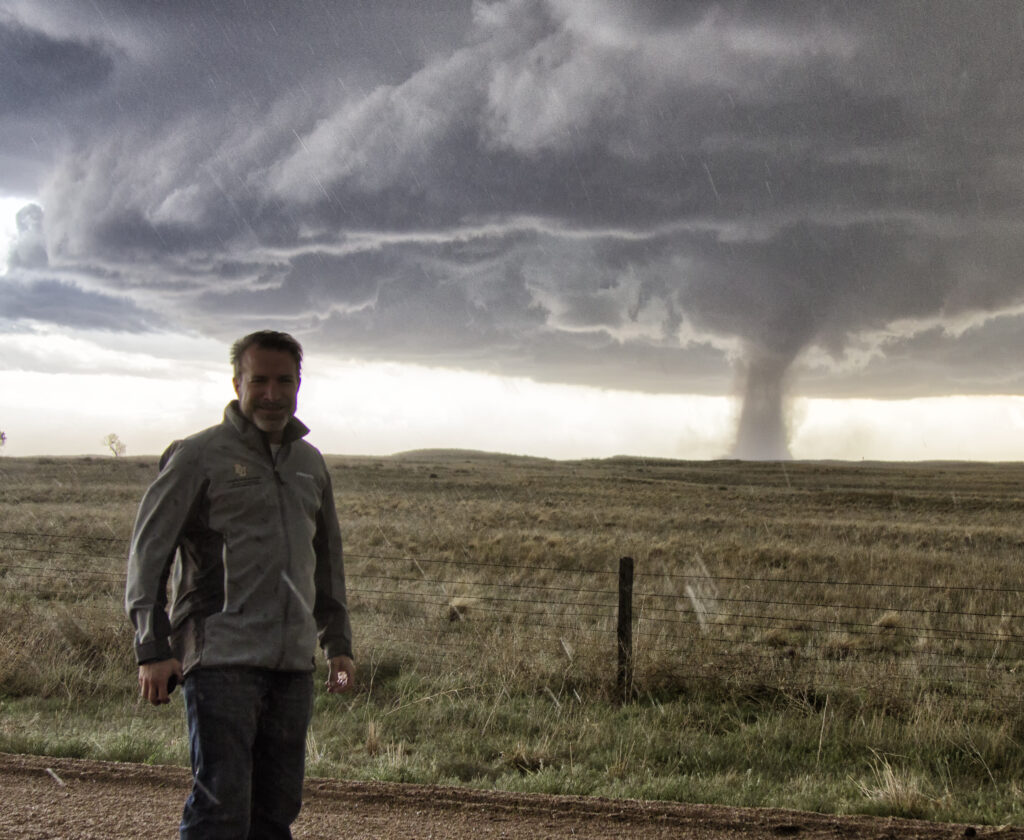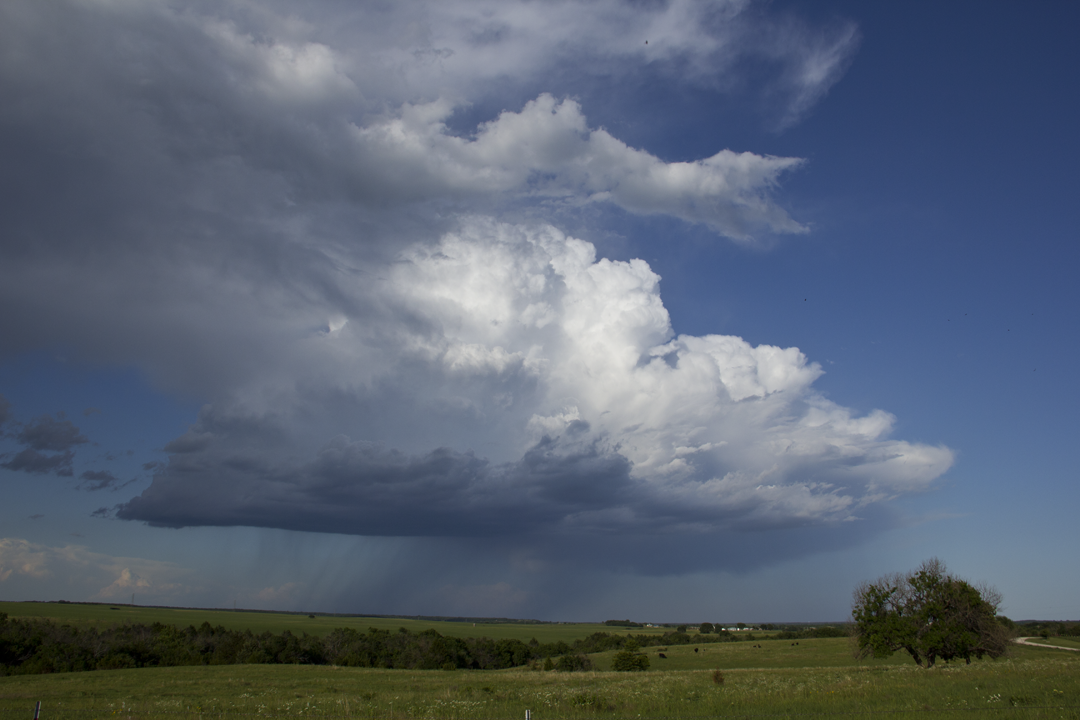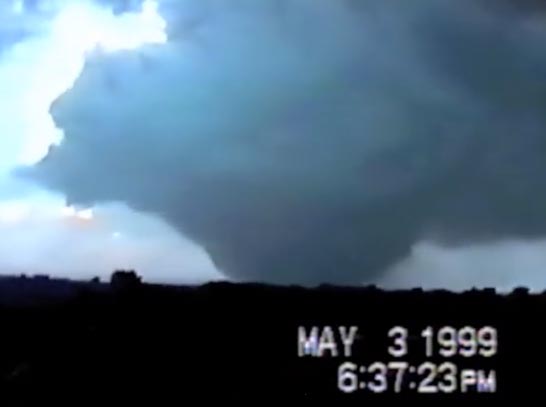Jason Persoff, MD, SFHM, is recognized globally for his expertise in storm chasing. He earned his Bachelor of Science in Medical Science and Doctor of Medicine degrees from the University of Colorado. His postgraduate training included an internship, residency, and Chief Resident position at Mayo Clinic Florida. He’s been featured in numerous television specials on channels such as The Weather Channel, Discovery Channel, and The Learning Channel. Additionally, his expertise has been showcased in a wide array of magazines and books. Dr. Persoff’s enthusiasm for weather extends to photography, capturing everything from outer space phenomena like auroras to intricate microscopic details like snowflakes. His captivating snowflake photography has garnered national attention, with features on PBS, The Weather Channel, and a spread in the Washington Post.
On the night of Sunday, May 22, 2011, A monstrous EF5 tornado unleashed its fury just west of Joplin, Missouri escalating rapidly to a terrifying scale. Its immense breadth, spanning nearly one mile (1.6 km), wrought havoc as it tore through the southern expanse of the city. With relentless force, it carved a path east through Joplin before roaring across Interstate 44, venturing into the rural expanses of Jasper and Newton counties. The tornado wreaked havoc across a vast swath of the city of Joplin, leaving nearly 8,000 structures in ruins, with over 4,000 completely obliterated. The extensive destruction encompassed critical institutions such as one of Joplin’s two hospitals.
Dr. Jason Persoff just happened to be chasing that tragic day in Joplin. He took the time to recount with me about the moments before, during, and after the multi-vortex Joplin EF5 tornado. “The morning forecast seemed like a slam dunk—SE KS had a multi-ingredient high CAPE and shear environment with clear skies. As storms formed in the afternoon, they were multicellular and numerous with minimal organization and felt very HP and outflow dominant.” he recalled. “I had begun to feel that storms were going to die out due to broadscale convection competing with each other. Then as I was chasing approaching the Missouri border, the storm intensified and organized quite spectacularly.” he said. “At that time, I’d met up with Cloud 9 Tours (with Charles Edwards) and we began to plot a course to Joplin.
The sky transformed into night in what felt like a couple of minutes.” Dr. Persoff recalled. “We were on the western edge of the storm, separated quite a bit from the updraft due to intense RFD. I’ll never forget the RFD was electrified unlike anything I’d ever seen previously. There were “zits” of lightning zipping about the RFD—frequent punctate lightning sparking everywhere.” he recounted. “As we crossed the border it became clear that a debris ball had appeared in what had become a violent storm. We knew we couldn’t catch the storm, but the initial hope was that it would either cross the highway to the south allowing us a chance to get on the north end of the storm, or that it would continue straight so that the highway would eventually take us north of the storm for a chance at retaking the meso. But the combination of inflow jets and RFD resulted in significant vehicle damage on the highway, and we stopped to help. At that time, we also noticed that there was no traffic coming from east to west on the highway. All of that was bad.” Dr. Persoff recalled.
“We stopped the chase as George Kourounis with Cloud 9 stated we had to get into “first response mode.” At first, I thought we had encountered the tornado’s path (but we were actually
south of the tornado path by about ½ mile).” I took charge of the scene rapidly, asking my chase partner to attend to 3 vehicles in the westbound lanes. I worked with Mike Ratliffe to secure the scene on the eastbound trucks and the one tossed like a toy onto the on-ramp. I remember trying to emanate calm, I remember trying to pretend the lightning didn’t scare me, but internally I wanted to be anywhere but walking down the middle of an interstate watching a victorious forecast manifest in hideous destruction. Every rationale part of me knew I needed to take cover, the threat of death by electrocution or falling debris still loomed imminent. Still, I also felt the reflexive need to take charge and take back the earth from the sky.” he stated in his blog post about this tragic day.
When asked about the immediate medical needs he encountered in the aftermath of the tornado Dr. Persoff said “Initially on the highway, it was mostly dealing with abrasions and bruising. Once I got to the Freeman Hospital in Joplin, it was a staggering variety.” In the above blog post he further elaborates, “When I’d gotten out of the car the first time, I was convinced we were in the tornado’s wake, tending to the tornado’s victims. I was wrong. We moved forward into a battlefield of staggering dimensions where the tornado had crossed the interstate. Where I had only seen a few trucks and few passenger vehicles near the overpass now, just east of there, was a quarter to half-mile wide cacophony of vehicles mangled, overturned, tossed, and littered with mud, tree limbs, glass, and utility parts.” “Coming off the exit we re-entered the damage path. Tree limbs, stalled cars, and damage began to show up just north of our exit. Ambulances crossed the intersection to our north. Follow them, I thought. Beyond all reason, this sole intersection in the town had power. I brought the car up to the red light and stopped. The dichotomy of urgency and law abiding, the ego and the id.” He recounts in the blog post.
“Straight ahead there was a raucous of flashing lights and a solitary building I’d later learn was the other hospital. For now, I was just waiting at 32nd and Main St for the light to turn green. Finding an emergency room during an emergency proves to be decidedly difficult. Signs point up or left or right where roads seem to dash and turn. Somehow we made it to the ER parking lot during a loll in the ambulance activity.” He states in the above blog post. Once Dr. Persoff made it to the ER he witnessed horrible injuries. In his blog post he recalled a woman who had severe leg injuries. “She had a head laceration that was bleeding vigorously, soaking the head of the bed. Meanwhile, her mangled leg was not bleeding at all. Her toes of both feet pointed forward, but on inspection, it became clear that her left leg had spun 360 degrees about the shattered tibia and fibula and was essentially auto-amputated” He also stated that the most difficult thing he had to witness was the children who passed away, because he is a father to three himself.
I asked Dr. Persoff, “How did you coordinate with other medical professionals and first responders during the rescue and recovery efforts?” “Great question. Happenstance mostly.” He laughed. “Had that cop not come up to me in the middle of the road to tell me that St. John’s Hospital had been destroyed, I may never have even begun to grasp the severity of the situation. When my chase partner, Robert Balogh (also a physician) and I heard about that, we got directions to the hospital. After that it was just slipping into
physician mode.” Dr. Persoff explained.
When asked about the most common injuries or medical issues you treated among tornado survivors Dr. Persoff stated, “I was struck by just how much debris there was. Many buildings had been pulverized into a fine powder with embedded stuff—insulation, glass, rock, etc. Many of the victims had this fine powder embedded in their skin. I remember this one patient had some glass that cut open my glove when I was doing her exam. It was amazing how covered the victims were! It filled their ears or the nostrils. I’d never anticipated that.” he states. I was also amazed at the ubiquity of head injuries. People had been accelerated into objects (or the other way around) and head trauma was severe. For the victims I dealt with at the hospital who had been transferred over from St. John’s Hospital, they had similar issues, but also had the added complications of injuries from the medical equipment they had been attached to.” he conveyed.
I asked Dr. Persoff, “How did the devastation of the Joplin tornado impact you personally and professionally?” He responded The Joplin tornado was transformative. For years I had been trying to figure out if there was a way to do research in some way that combined my passion with weather with my role as a physician. That night I saw so many gaps in the disaster response at the hospital that could be
improved. I made a personal commitment to the people of Joplin that I would spend the rest of
my career trying to solve those gaps. And that has come to pass—ever since Joplin I have
become leader on the national and international level looking at emergency preparedness and
conducting research to improve patient care during disasters.” He added, “I hate feeling powerless over a situation. By transforming my career to focus on how to improve disaster response I feel like I can do something unique. Responding to disasters requires a very broad net of coordinated systems and organizations—it has been incredibly gratifying to participate in a leadership role to improve the system.”
Dr. Persoff has dedicated his life to further help hospitals prepare for disaster since the Joplin tornado. He is now the Assistant Director of Emergency Preparedness at the University of Colorado Hospital. I asked Dr. Persoff what advice he would give to aspiring storm chasers or medical professionals interested in
disaster relief work, and he said, “The most important piece of advice is to keep yourself safe. Nothing is worse than when arescuer jeopardizes their life only to become a victim of responding. Next, there are many ways to help. Starting at the scene of disaster, learn about triage and the incident command system. ICS is FREE to learn through FEMA and has multiple levels (I recommend ICS 100, 200hb).
These are self-paced modules that introduce how to integrate into disaster response.
Learn advanced first aid—I highly recommend all chasers take “Stop the Bleed.” That’s a course
on how to deal with hemorrhage (common in tornado injuries). Also learn how to handle patients
on a scene. Becoming an EMT is a worthy way to learn how to do that effectively. Wilderness
first aid is an exceptionally helpful training too.” he states.
“Recognize that it’s not as simple as showing up at a hospital after a disaster—there are some
major reasons that they will need to decline that assistance unless you have the proper
credentials to assist. Understand that it is also not helpful to show up an hour or two after the
response starts at the scene as EMS, police, and fire will be trying to secure the scene.
Sometimes the best help you can offer is financial by donating to organizations that aid in
disaster—the Red Cross in particular.” Dr. Persoff suggested.
“Last—recognize that disasters cause PTSD for many. I still have anxiety during disasters that
stems from the feeling of being overwhelmed during my response to Joplin. Counseling and
debriefing are key to recovery from these disasters.” he acknowledged.
In conclusion, my interview with Dr. Persoff has given us insights, derived from his dual roles as a medical doctor and a professional storm chaser has given us a deeper understanding of how acting fast can make a huge difference in saving lives. Looking at what happened in Joplin it’s obvious that investing in better ways to respond and making sure storm chasers are ready for the unexpected is really important. Let’s take the lessons from Dr. Persoff’s experiences to heart and work towards equipping ourselves to respond to natural disasters.
Candyse Arivett
Latest posts by Candyse Arivett (see all)
- The Storm Doctor: Dr. Jason Persoff - February 13, 2024


